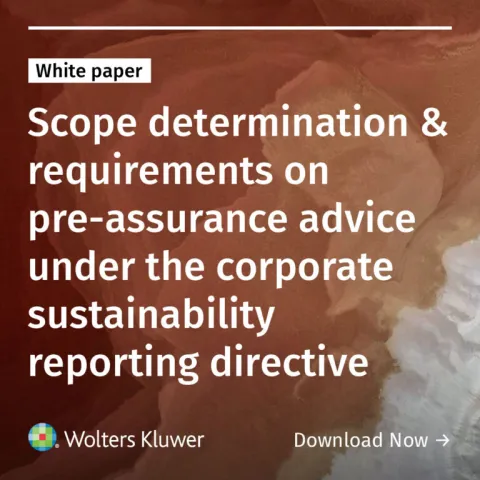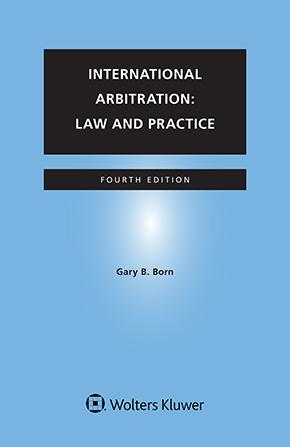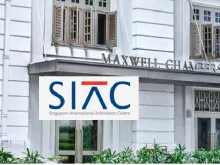Broad by Design, Ambiguous in Practice? Understanding the Scope of the 'Trust, Estate, and Foundation Disputes' Rules
August 12, 2025
The Swiss Arbitration Centre's Supplemental Swiss Rules for Trust, Estate, and Foundation Disputes ("TEF Rules"), accompanied by an Explanatory Note, came into force on 1 July 2025. They mark an important step forward in the development of arbitration tailored to trust, estate, and foundation ("TEF") disputes. As with any innovation, however, their implementation raises as many questions as it answers. In particular, the TEF Rules' approach to defining their own reach, what they include and what they intentionally leave open-ended, sparks both optimism and debate.
This post takes a closer look at how the TEF Rules approach the question of their scope. We examine the triggers for their application, the impact of undefined terms, the challenges around the validity and enforcement of unilateral arbitration clauses, the question of who is actually bound by such clauses, and conclude with practical drafting guidance to help navigate these complexities.
Same Dispute, Different Rules?
The TEF Rules define their scope by combining automatic application and opt-in mechanisms.
According to Article 1(1), the TEF Rules apply: (i) automatically, where a clause in a unilateral legal instrument such as a will, trust deed, or foundation statute ("Unilateral Arbitration Clause") refers to the Swiss Rules of International Arbitration ("Swiss Rules"); (ii) where the clause, whether unilateral or contractual, expressly refers to the TEF Rules (or their now-obsolete predecessor, the Introductory Rules of the Swiss Association for Arbitration in Inheritance Matters, "SVSiE Rules"); or (iii) where the parties agree post-dispute to apply the TEF Rules.
This hybrid structure reflects the dual reality of TEF disputes: many arise from unilateral acts such as wills or foundation statutes, but others arise from multilateral agreements like inheritance contracts.
The novelty lies in the TEF Rules' form-based trigger: if a unilateral instrument refers to the Swiss Rules, the TEF Rules apply automatically, even without express mention. In effect, the TEF Rules quietly expand their reach and ensure tailored procedures where they are most needed, even where the drafter failed to mention them.
At the same time, this mechanism means that substantively similar disputes may be treated differently depending on the legal form of the arbitration clause. For example, a conflict over inheritance rights arising under a will automatically falls under the TEF Rules, while a comparable dispute under a multilateral inheritance agreement referring only to the Swiss Rules will not.
Why does this matter? If the TEF Rules apply, the parties and the arbitral tribunal must take additional procedural steps described in Articles 2 and 3 of the TEF Rules, such as identifying and informing all persons whose rights may be affected, or involving the Arbitration Court of the Swiss Arbitration Centre ("Court") in appointing arbitrators. These steps add complexity but can reduce the risk of later challenges. Conversely, if the standard Swiss Rules apply, none of these safeguards are triggered. The process may appear leaner, but it may leave the award more vulnerable, especially in disputes involving absent heirs, protected classes, or other parties who were not formally included.
No Definitions, No Problem?
One of the most striking choices in the TEF Rules is what they leave unsaid. The TEF Rules do not define two key terms that determine when they apply: "unilateral legal instrument" and "trust, estate, or foundation dispute". This omission is intentional and designed to give the TEF Rules flexibility across jurisdictions with varying legal forms, instruments, and terminology. Yet, by avoiding clear definitions, the TEF Rules leave more interpretive work and risk.
The first ambiguity arises around the notion of a "unilateral legal instrument". Wills, trust deeds, and foundation statutes clearly fall within the concept, but what about more ambiguous documents, such as letters of wishes, foundation by-laws, or documents with mixed legal character? In practice, it will be up to the arbitral tribunals, and ultimately the annulment or enforcement courts, to determine whether a given instrument qualifies for automatic application under Article 1(1).
Another challenge is the undefined scope of "trust, estate, or foundation disputes". Without clear boundaries, parties may disagree on whether a particular claim triggers the TEF Rules, leaving again the arbitral tribunals and courts to resolve the uncertainty. The TEF Model Arbitration Clauses are broadly worded to cover "any dispute, controversy or claim arising out of or in relation to" the relevant instrument. Still, ambiguity persists. In particular, disputes intersecting with other legal regimes (such as matrimonial property law, tax law, corporate governance, insolvency, and real estate regulation) can blur the lines. As a result, arbitral tribunals and courts across jurisdictions could reach divergent views on jurisdiction or enforcement.
The Explanatory Note advises, in doubt, to presume that a Unilateral Arbitration Clause exists. This may be helpful to keep proceedings on track in the early stages, but it is no guarantee. Such assumptions can easily be challenged later in annulment or enforcement proceedings.
A Valid Clause, But Valid Where?
The TEF Rules, like all institutional arbitration rules, cannot determine whether a Unilateral Arbitration Clause is valid. That question remains subject to the applicable substantive and formal law.
If the seat of arbitration is Switzerland, a favorable legal framework applies. Since 2021, pursuant to Article 178(4) of the Swiss Private International Law Act ("PILA") and Article 358(2) of the Swiss Civil Procedure Code ("CPC"), Swiss law recognizes both the formal and substantive validity of arbitration clauses in unilateral instruments. Importantly, this applies without the need to consider any provisions of the substantive law applicable. That said, the Swiss Federal Supreme Court has not yet directly ruled on this point, and drafters would be wise to consider potential validity challenges under other legal systems. In practice, this means that seating the arbitration in Switzerland is highly advantageous, but it does not absolve the drafter from verifying that the clause complies with other applicable laws, especially when the estate or trust assets are located elsewhere.
Arbitrability in TEF disputes poses another challenge. A TEF clause will not help if the applicable law does not permit the TEF dispute to be arbitrated or if a court refuses enforcement on public policy grounds. Thus, even a well-drafted clause may face legal obstacles depending on where it is invoked or enforced.
Who is Bound? The Challenge of Subjective Scope
A valid clause may be in place, but who exactly does it bind? Unilateral arbitration clauses aim to bind a broad group of individuals who did not sign the instrument and might not even be aware of its existence or content. This raises issues regarding their subjective scope, namely, whether parties not expressly named or clearly benefiting under a TEF instrument can nonetheless be considered bound by the clause. Ultimately, the issue will have to be resolved by the arbitral tribunal or court under the applicable arbitration and substantive laws, and significant uncertainty persists across jurisdictions.
In trust matters, the TEF Model Clause tries to get ahead of the problem. It is drafted as an agreement between the settlor, the original trustee(s), and, where relevant, the protector or other power-holders. Successors to these roles are bound either by express agreement or by acting under the trust. Beneficiaries, meanwhile, are deemed to have accepted the arbitration clause by accepting any benefit, interest, or right from the trust. The clause even allows the trustee to require beneficiaries to confirm this in writing; refusal is treated as a waiver of the benefit. Like the ICC model clause for trust disputes, it relies on deemed acquiescence: accepting a benefit is treated as consent to arbitrate.
Ultimately, the extent to which a Unilateral Arbitration Clause binds parties who did not sign or formally accept it remains a jurisdiction-sensitive question. Given the legal uncertainty around non-signatories, a practical workaround could be to invite affected parties, such as heirs or beneficiaries, to sign a separate or supplementary arbitration agreement referring to the original unilateral act - upon notification or post mortem.
Conclusion: Clarifying the Scope at the Outset
The takeaway is clear: the scope of the TEF Rules is not self-evident. Those who want to benefit from their tailored procedures must build clarity into the arbitration clause from the very beginning.
This means drafting arbitration clauses that, among other things:
- in multilateral agreements (where the form-based trigger does not apply), expressly provide that the TEF Rules govern the arbitration;
- comply with any applicable formal requirements for incorporating an arbitration clause in a will, trust deed, or foundation statute;
- clearly identify who is to be bound by the clause, especially in unilateral instruments, e.g., naming heirs across all degrees, including per stirpes successors or substitutes;
- specify the types of disputes covered by the clause (e.g., validity of the instrument, interpretation, asset division, disputes among trustees, protectors, or beneficiaries);
- take into account whether the relevant jurisdictions allow arbitration of TEF matters, including limitations on arbitrability or mandatory court supervision; and
- consider whether the jurisdictions involved are signatories to the United Nations Convention on the Recognition and Enforcement of Foreign Arbitral Awards ("New York Convention") and whether they will classify the dispute as "commercial" under the New York Convention.
You may also like











